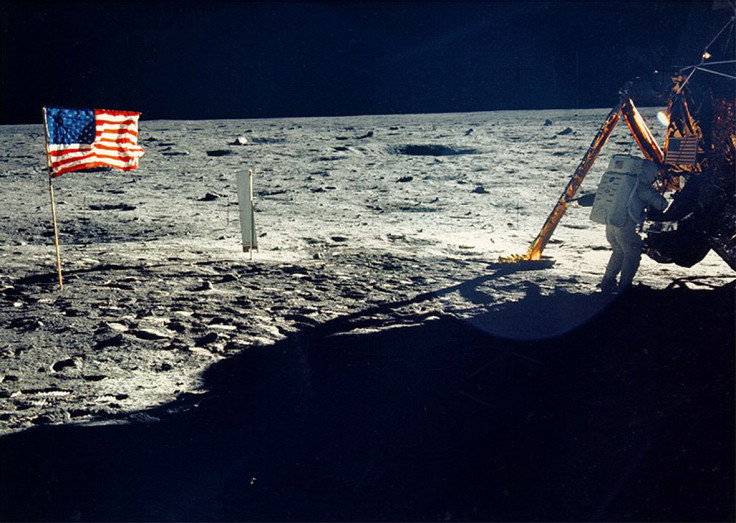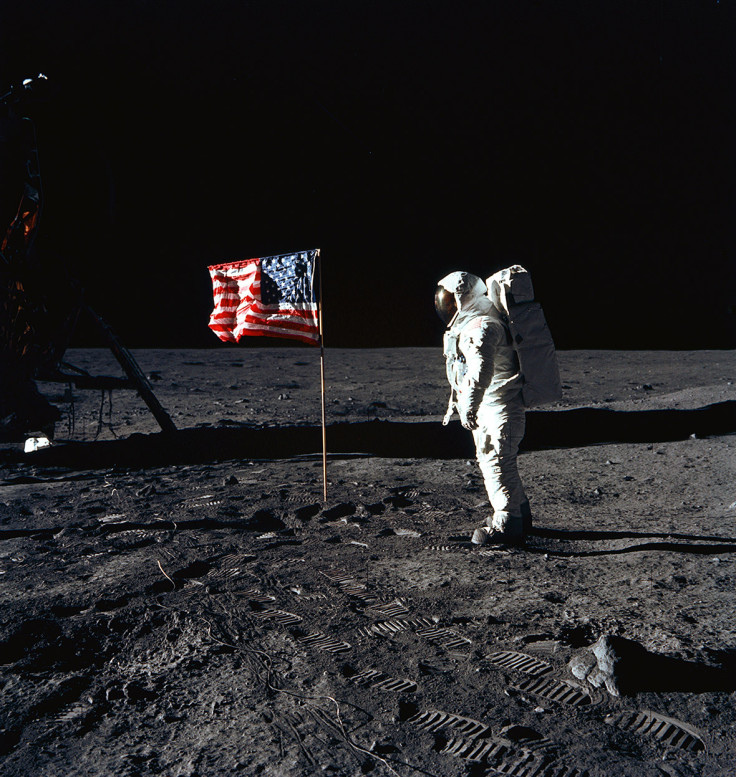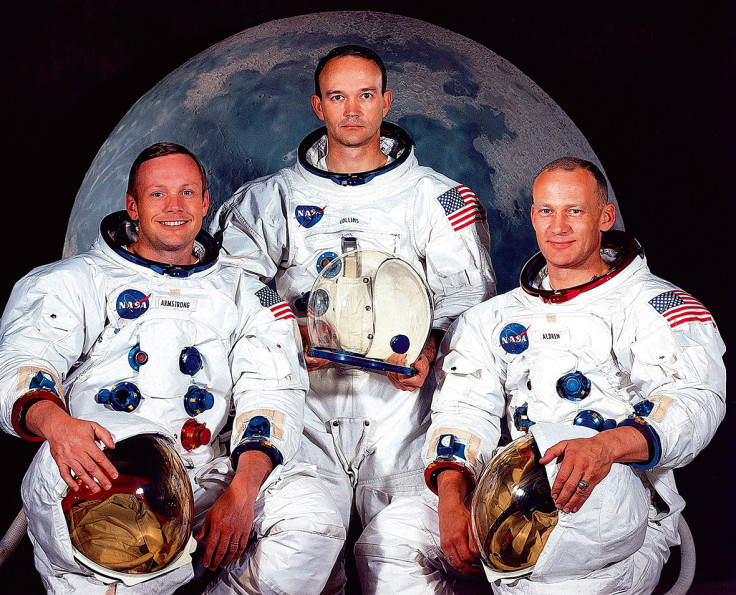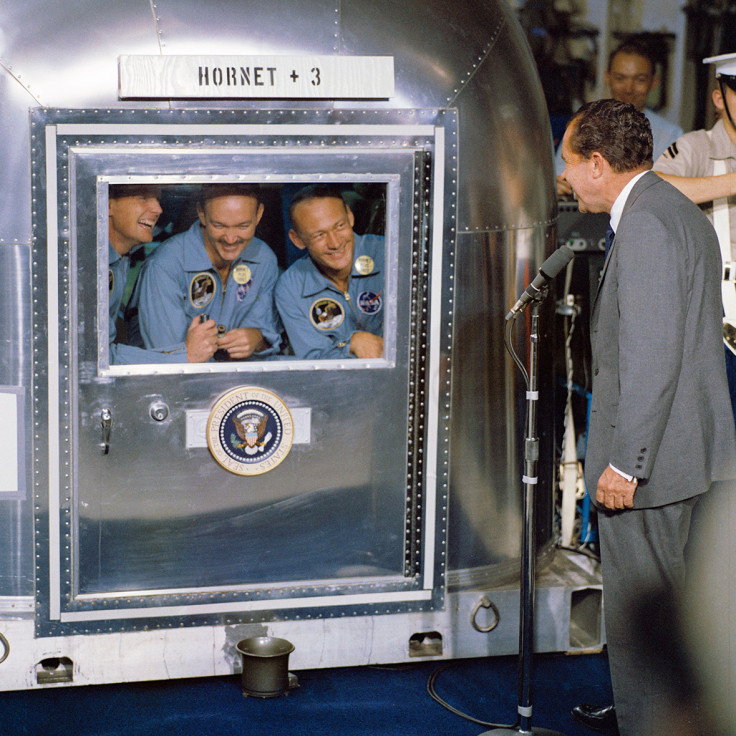Debunking the Myth that the Moon Landing Was a Hoax

Forty five years ago today, for the first time in history humanity existed on two worlds at the same time.
On Earth, approximately 1 in 7 of the 3.6 billion people on its surface was watching two people step out onto the Moon. This moment followed an eight year space race, a 3 day journey to a lunar orbit, a two and a half hour descent that nearly had to be aborted at the last minute, and what you can only imagine was a uniquely tense 7 hour wait in the lunar module.
On 21 July, Neil Armstrong walked on the moon.
The delay between landing and walking onto the surface had originally been intended to allow Armstrong and Aldrin to catch some sleep after a long day; unsurprisingly, neither was in the mood for a nap.
The Moon landings have had significant cultural and economic impacts, and are regularly voted as the most significant event in modern history. As a demonstration of what we as a species are capable of when focussed on a specific goal they are unmatched.
However, sending and returning a total of 12 people over six missions safely to the surface of another world and back is a feat of engineering so incredible that for many people it is exactly that – incredible. A sizeable portion of the public (6% in the US according to a 1999 Gallup poll, and a worrying 25% in the UK according to a 2009 survey in E&T magazine) believe that at least some parts of the Apollo program was fabricated by Nasa.
Moon landing conspiracy theories are almost as old as the Apollo program itself. In 1974, two years after the final Apollo 17 mission, a technical writer called Bill Kaysing self-published the book 'We Never Went to the Moon', and as recently as last year Channel 5 broadcast the Fox documentary 'Did We Land On The Moon?'.
Remarkably, both sources offer the same 'evidence' that the landings were faked, despite an intervening forty years of thorough debunking. Here are three of the most common:
No Stars Visible in Photographs
The sky is, to use the scientific term, lousy with stars. With the naked eye you can see about 5,000 of them – unless of course it is daytime. During the day, the atmosphere surrounding the Earth scatters some of the light from the Sun (blue light scatters most of all, which is why the sky is blue, and also why the Sun appears red when it's low on the horizon, when most of the blue light from it has been scattered away). This scattered, diffuse light is enough to completely drown out the tiny pinpricks of light from stars that are billions of kilometres away.
At night, when the Sun's light is obscured by Earth, we have a relatively clear view at the starscape.
The Moon, lacking an atmosphere, is different. Even during the day the sky is pitch black. The Sun's rays shine down unscattered to the Moon's surface. Why then are stars not visible in photographs taken by the Apollo astronauts?
The answer is to do with exposure time. Your typical lunar photograph features an astronaut wearing a bright white spacesuit, some white equipment of mysterious and arcane function, and several square kilometres of greyish landscape, all beneath a pitch black sky. Compared to the amount of light falling on the camera from features on the surface, the incident light from the stars is tiny.
If the camera had a long enough exposure time to capture enough light from the stars that they would be visible, everything else in the image would be overexposed and bleached out. Even if you take a photo of the stars on Earth, it's unlikely you'll see much if there's anything even a little bright in the foreground.
Waving Flag in a Vacuum

Imagine you are in charge of shooting the fake Moon landing at Area 51. You are under enormous pressure to get it right. The US government has made it clear that you are to produce an absolutely flawless portrayal of a successful mission to the Moon: so technically perfect that it stands up to the harshest of scrutiny for decades to come. Anything less would cause irreparable damage to the reputation and trustworthiness of the US government.
Today you are shooting the planting of the flag, a scene that will surely be screened thousands times over the coming decades to billions of people. Armstrong bounces over to the flag-holder, unfurls the nylon flag, and places it upright.
At that moment a gust of wind from an errantly open stage door causes the flag to flutter and flap. The director shouts "Cut!" and asks you if you want to reshoot.
"Nah, no-one will notice," you reply.
This is one of those pieces of 'evidence' that can be dismissed almost purely because it beggars belief that the conspirators would be that careless. It has been pointed out by some that faking the Moon landings, rather than actually doing them, would be the more technically impossible feat, but one would have thought that a multi-billion dollar conspiracy would remember to keep the doors shut when they were shooting what was meant to be an airless environment.
In actual fact, the reason the flag moves as if flapping for some time after it was planted is precisely because there was no air. In a vacuum, things that are moving tend to keep moving, and in the absence of drag from the air, the suspended flag moved back and forth like a pendulum for a few seconds.
Lethal Radiation

Astronauts that have ventured outside the Earth's protective atmosphere have occasionally reported a strange phenomenon: intermittent flashes of white light in their field of view, with no apparent source. These have since been found to be due to cosmic rays interacting with the retina, stimulating it to cause the perception of light.
Our proximity to the Sun provides the light and warmth we need to live, but it also means that if we venture outside the Earth's magnetic field we are exposed to something else that the Sun emits in huge quantities – ionising radiation.
The effects of ionising radiation on the human body can be much worse than annoying flashes of light, but luckily for us the Earth's magnetic field protects us from most of it.
Some radiation gets captured in the magnetic field and forms a deadly layer tens of thousands of kilometres above the Earth called the Van Allen belts – too high to affect space shuttle astronauts or communication satellites, but potentially deadly, the conspiracy theorists claim, to the Apollo astronauts who supposedly traversed them.
The problem here is a conflation of two concepts. Some people get confused about the function of the Van Allen belts, thinking that they protect us from the radiation, and that space outside them is awash with deadly radiation. In fact, for most of the distance between Earth and the Moon the radiation level inside the Apollo spacecraft were only slightly elevated.
They still had to pass through the belts, but the mission was planned so that they spent the minimum amount of time inside them.
In total, the Apollo astronauts received a radiation dose of about 10 milliSieverts, which is approximately the same as a CT scan (or one year living in Cornwall).
There are many other theories that have been put forth over the decades, and without exception they have all been debunked, often after only the barest amount of applied logic. There are, on the other hand, many pieces of evidence irrefutably showing that over the space of 3 years, 12 men walked on the surface of the Moon and returned back to Earth.
Mirror mirror, on the Moon

As well as footprints, flags, golf balls and $38m automobiles, the Apollo astronauts left something else on the surface of the moon – a large mirror, similar to a cats-eye reflector.
The moon is fairly reflective, but surprisingly its albedo (the amount of light that it reflects) is only 0.12 – about the same as coal. The reason it appears so luminous and white is partly because of its contrast with the blackness of space, but also because the Moon's reflectivity is fairly directional (light falling on the surface tends to reflect back in the same direction, making full Moons especially bright).
The Lunar Laser Ranging Experiment improves on both these characteristics, providing a surface on the Moon that is extremely reflective and very directional.
As a result, it is possible to fire a laser at the Moon's surface and, about 2.4 seconds later, detect the reflected beam. By measuring this time interval exactly, we can measure the distance to the Moon so precisely that we know, for example, it's getting further away by 3.8cm a year.
These experiments have been repeated independently multiple times since 1969, and none of them would have worked if that mirror hadn't been left there by the Apollo astronauts.
The Size of a Conspiracy is Inversely Proportional to the Odds of it Remaining a Secret

The Apollo programme involved thousands of people working towards a single goal. Every stage of the mission and every component of the spacecraft was planned in meticulous detail by experts from dozens of different specialities. If the goal of the programme wasn't to put someone safely on the Moon and return them safely, it seems incredibly unlikely that someone wouldn't have worked this out.
The amount of effort it would have taken to maintain the conspiracy seems so great, that actually landing on the moon seems on balance the simpler option (relevant Mitchell & Webb sketch here).
Even worse, the conspiracy would necessarily have to extend beyond Nasa. The moon landings were independently confirmed by nations all over the world – including the Soviet Union.
There reaches a point where if your hypothesized conspiracy involves the collusion of both sides of the Cold war then you're attributing so much power to the conspirators that there seems little point trying to uncover it.
Returning to the scene of the crime
In what you would hope would be the final headshot to put down the Moon landing hoax zombie once and for all, the Lunar Reconnaissance Orbiter has taken several high resolution photographs over the last few years of all six Apollo landing sites.
The continued popularity of the Moon landing hoax conspiracy theory is odd, given the continuing accumulation of evidence against it.
Part of the reason may be that with the advent of Photoshop and the increasing use of photorealistic special effects in movies people have become used to the idea that images and videos can be convincingly altered, forgetting that these techniques were virtually non-existent in 1969.
Another part may be due to a growing distrust of government, and a growing list of scandals showing that, yes, sometimes governments do conspire against their citizenship.
But any theory, including conspiracy theories, must be based on evidence, and nothing that has been offered as evidence against the Moon landings holds water.
A human walking on the Moon is one of the greatest ever human achievements, and it is disheartening and frustrating to see people try and erase it from history by insisting it never happened. When Buzz Aldrin was accosted by a conspiracy theorist who called him "a coward, a liar and a thief", it's hard to blame him for his reaction.
Donald Sinclair is a former physics teacher and lecturer who now works as a medical physics researcher / imaging scientist in cancer research at one of London's top hospitals.
© Copyright IBTimes 2025. All rights reserved.





















